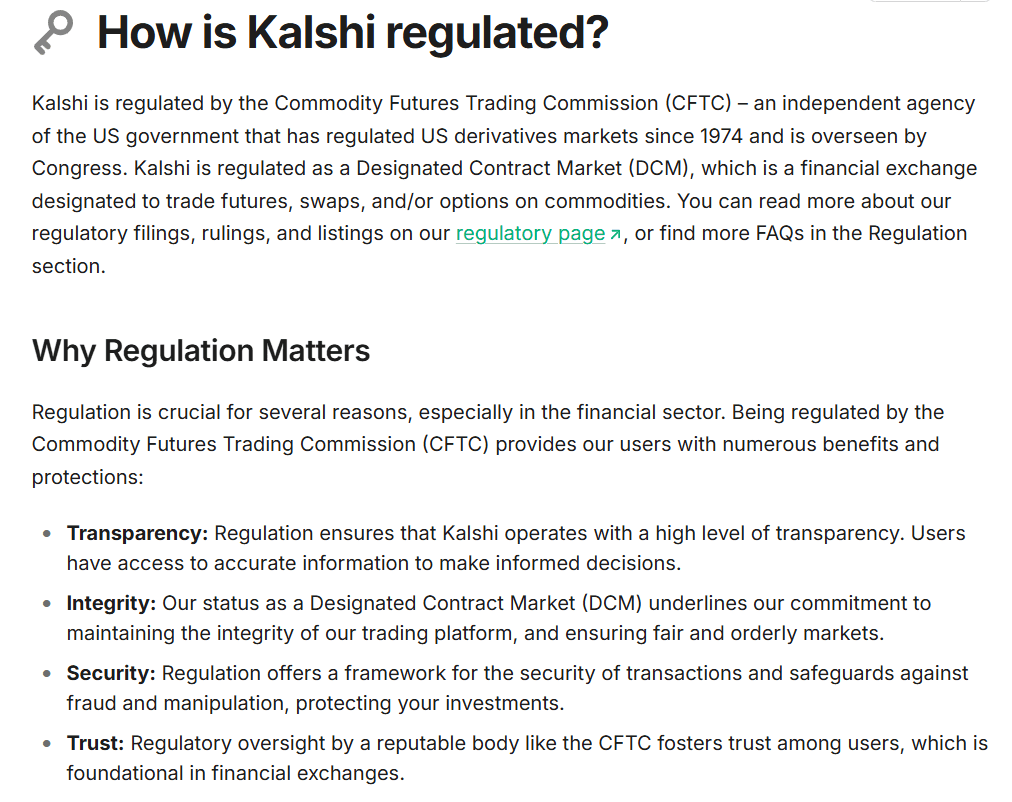Oracle provider RedStone has integrated event-driven market data from Kalshi across more than 110 networks. The rollout covers Ethereum, Solana, Base, TON, Sui, and other chains. As a result, decentralized applications can query regulated event outcomes directly onchain.
The feeds include elections, interest-rate decisions, and cultural moments like Taylor Swift live TV appearances. Developers can wire these signals into protocols that need clear, binary settlement data. Therefore, pricing and liquidation logic can reference events rather than only price ticks.
RedStone announced the partnership on Thursday. It framed the move as opening access to categories that offchain venues already clear under U.S. rules. The integration exposes those categories to smart contracts with RedStone’s delivery model.
CFTC-regulated Kalshi and the approval process
Kalshi operates as a Designated Contract Market (DCM) under the CFTC. Markets listed on Kalshi must receive CFTC approval before trading. That status defines how events are structured, listed, and settled.

On Oct. 10, Kalshi raised $300 million to expand access to prediction markets in over 140 countries. The funding details arrived alongside the global expansion plan. The venue continues to pair regulatory approvals with broader distribution.
This regulatory baseline matters for oracle design. Because each market is approved, event definitions are precise and auditable. Consequently, DeFi protocols can map those definitions into onchain parameters without rewriting terms.
Rollout markets: NYC mayoral race, 2028 Democratic nominee, 2025 rate cuts
The first three categories target public events with clear resolutions. They include the New York City mayoral election. They also include the 2028 Democratic Party nominee for U.S. president. Finally, they include the number of interest-rate cuts in 2025.
RedStone says additional markets may follow. However, timing depends on developer demand across supported chains. Teams can request specific feeds once use cases emerge.
These categories fit standardized oracle updates. Elections and rate decisions resolve on public schedules. Therefore, contracts can preset observation windows and settlement methods with fewer edge cases.
Use cases: derivatives, perps, lending—powered by RedStone oracles
In practice, a perp DEX could reference a “rate cuts in 2025” market as a funding driver. A lending market could accept tokenized positions as collateral. Then, it could use the same feed for risk checks and liquidations.
Kazmierczak stressed the effect of regulated inputs.
“The regulated nature of Kalshi’s events means we’re unlocking data categories that were previously unavailable onchain, opening entirely new possibilities for how DeFi will evolve,”
he said. That framing ties oracle scope to markets that pass CFTC review.
Insurance and social finance with prediction markets; Securitize, BlackRock BUIDL, Apollo ACRED
Kazmierczak pointed to insurance-style designs as a promising track. As events resolve, policies can pay out based on an approved settlement. This creates parametric-style coverage without subjective claims adjustment.
He also mentioned social-finance experiments that could engage wider audiences. As onchain communities form around events, protocols can route stakes, refunds, and payouts through standard contracts. The oracle becomes the single resolution source across participants.
In May, Securitize selected RedStone as its primary oracle for tokenized contracts. That stack covers BlackRock’s USD Institutional Digital Liquidity Fund (BUIDL) and the Apollo Diversified Credit Securitize Fund (ACRED). These selections show RedStone handling RWA data flows in parallel with event feeds.
Prediction markets and mainstream interest: signals and simplicity
Researchers argue that prediction markets offer clean signals. On Friday, Azuro researcher Mike Rychko said the format could reach mainstream users. He emphasized that accessibility makes these markets an entry point beyond trading terminals.
“That simplicity is precisely why prediction markets will find mass adoption faster than most DeFi experiments ever did,”
Rychko said. The remark underscored how binary outcomes can be easier to read than complex charts.
The RedStone–Kalshi connection arrives into that narrative. It pairs CFTC-approved events with multi-chain delivery. Then, it places those data into contracts that already move collateral and settle risk.
